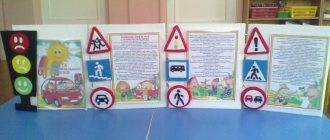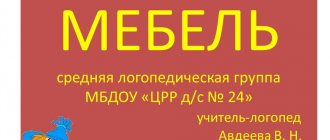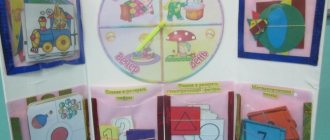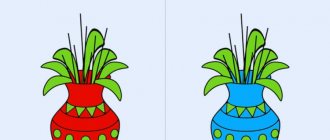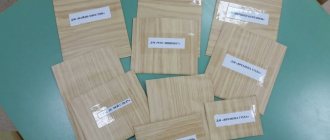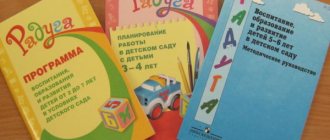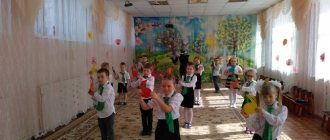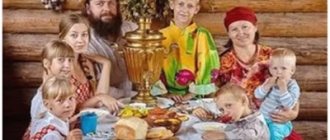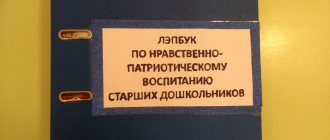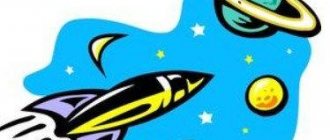"Circles of Llull" are a set of interconnected circles or rings in the shape of a pyramid. The creator of this complex of developments is the French monk Raymond Llull. The history of the game's creation began with work on the development of speech functions and logical thinking.
Currently, “Pacification Circles” are actively used by teachers and speech therapists in kindergartens. Thanks to its simple design and wide functionality, this product is understandable and easy to use, and is indispensable in the work of teachers.
How to use Lull circles?
Circles of Llull - what are they? This is a kind of pyramid with pictures, words or numbers. The arrow is located above the circles. All rings are movable and can be rotated in both directions. The rings are divided into several sectors. As the circles rotate, the arrow highlights certain sectors at each level. Sectors can contain pictures, riddles and entire sentences.
The player asks a question and spins the toy. The resulting combination can be interpreted as an answer to the question, and imagination and logic are associated with decoding.
Modern “circles” are divided by topic. Together with your children you can study “Fruits and Vegetables”, “Animals”, “Clothing” and so on. “Circles of Calm” are ideal for introducing a child to the outside world. In a playful way, preschoolers learn new words, their meanings and functions.
“Quiet Circles” are especially recommended for the following activities in a preschool educational institution:
- Familiarization with surrounding objects;
- Development of coherent speech;
- Knowledge of mathematics;
- Development of thought;
- Ability to establish logical connections between objects;
- Comfortable socialization and communication with people, etc.
You can create “Lulle circles” with your own hands. The topic is selected at the discretion of the teacher for a particular lesson.
Implementation of the didactic game “Circles of Lull” in a preschool educational institution
All-Russian permanent PROFESSIONAL competition for teachers of preschool educational institutions “Developmental environment in preschool educational institutions - 2022.”
Karavaeva Olga Rudolfovna
MBDOU "Kindergarten No. 230", Izhevsk
Developmental potential of a didactic game
Implementation of the didactic game “Circles of Lull” in a preschool educational institution
In my teaching practice I use the didactic games “Circles of Lull”. Today they are a universal didactic tool that shapes the thinking processes of children.
New games and entertainment have appeared in the education system of preschool children. Children easily master information and communication tools, and it is difficult to surprise them with traditional visual means. Therefore, the teacher should look for interesting and at the same time simple ways to develop the child. At the same time, the choice of didactic means for children with special educational needs is of particular relevance.
Advertising message
The didactic manual can be used as a means of cognitive development in working with preschool children. The manual is intended for children aged 5-7 years, on the formation in children of concepts related to the characteristics of objects and changes in their meanings and manifestations, created as part of the adaptation of methods from the theory of solving inventive problems. This technique is games based on Lull circles and various pictures. I became interested in Lull circles and wanted to make them. And I began to use them in my work with children. It is from these pictures, real, recognizable, with characteristic features, that the child determines the world around him.
What is interesting about these games? They introduce an element of play into GCD, help maintain interest in the topic being studied, and solve problems of children’s development in educational areas.
Area of social and communicative development: child’s interaction with adults and peers, regulation of one’s own actions, development of social intelligence and formation of readiness for joint activities.
Area of cognitive development: development of children's interests, curiosity, mastery of cognitive and research activities, formation of ideas about objects of the surrounding world.
Area of speech development: expansion and activation of vocabulary, speech creativity, familiarization with new words and clarification of their meaning, development of children’s communication during the game.
The area of artistic and aesthetic development: the development of children’s perception, the formation of an aesthetic attitude towards the world around them. In the future - the implementation of independent creative activity.
Tasks when conducting games:
- Create an atmosphere of kindness and a positive emotional mood in the peer group.
- Develop the intellectual sphere, thinking skills, visual-effective, visual-figurative, verbal-logical, creative thinking.
- Develop the personal sphere, adequate self-esteem, and increase self-confidence.
Game "Tree-leaf-fruit"
Goal and tasks:
– introducing children to the trees of their native land,
– teach children to pick up leaves and fruits of trees;
– the ability to distinguish and name leaves and fruits of familiar trees;
– consolidate with children the names of trees, the appearance of leaves, fruits, trees;
– develop speech, attention, observation, memory;
Rules of the game:
Invite the children, after scrolling the circle correctly, to select matches and name and pin familiar trees.
Game actions:
Option 1 – the child chooses and names a tree, finds the corresponding leaf and fruit.
Option 2 – guess the riddle about the corresponding tree, find it, describe it
Option 3 - one child makes a riddle of a fruit or a leaf of a tree, and the other must pick up the 2 remaining parts of the riddle.
Option 4 is to first make up sentences with the children like “The acorns are ripe on the oak tree,” and then make up a short story, for example: what birds fly to this or that tree.
FEMP game “Fun Counting”
Goals and objectives:
- Introducing children to numbers from 1 to 8, consolidating numbers and number series within 8.
- Consolidation of reverse and ordinal counting, correlation of number and quantity.
- Development of attention, memory, visual-figurative and logical thinking, the ability to analyze, compare, classify through teaching counting operations using a didactic game.
Rules of the game: Count the dots on the backs of ladybugs and connect them with the desired number.
Game actions:
Option 1. Starting with number 1, we find the required number of points on the ladybug and connect.
Option 2. We call the number and look for a cow with the corresponding number of dots in reverse order.
Option 3. When guessing a number, we find the desired cow and the number on the sheet, and name the “neighbors” of the given number.
Game “Read by syllables”
Goals and objectives:
Maintaining interest in reading. Strengthen the skill of reading syllables. Practice reading words with two syllables. Promote the development of auditory and visual attention.
Rules of the game: by spinning the circle, the child must find the correct syllable.
Game actions:
Option 1. We read all the syllables and try to form words.
Option 2. Using a picture and a syllable on a small circle, we find a match.
Option 3. You can offer to make up funny words.
Option 4. Use words to create “Colored” sentences. For example: “A yellow turnip has ripened in the garden,” “They bought us colorful balls,” “A red rose has bloomed.”
Expected results:
- Children will develop:
– intelligence, thinking skills, thinking;
– personal sphere, adequate self-esteem, self-confidence.
- Children will learn:
– maintain a positive emotional climate in the peer group;
– analyze objects on a sensory basis;
– group objects according to common characteristics;
– independently come up with real and fantastic tasks;
– subordinate one’s behavior to a group of peers
- Children will become interested in reading
TRIZ technologies in kindergarten Circles of Lullia.
TRIZ technologies in kindergarten Circles of Lull.
One of the effective pedagogical technologies for developing children's creative abilities is TRIZ - Theory of Inventive Problem Solving.
The purpose of using TRIZ in kindergarten is to develop, on the one hand, such mental qualities as flexibility, mobility, coherence, and on the other hand, research, the desire for novelty, language development and creative imagination.
I bring to your attention a game system of tasks and exercises based on the invention of Raymond Llull - “Circles of Calm”. Which is directly related to TRIZ technology. The invention received its name in honor of the name of its creator. In the 13th century, a French monk created a logic machine in the form of paper circles.
In my work, I use Llull circles as a play technique aimed at enriching a child’s vocabulary, developing cognitive activity, and expanding ideas about objects. They are effectively used in pedagogy to develop the linguistic, intellectual and creative abilities of children.
Lull circles are presented to preschoolers in the form of wonderful rings or mysterious circles. To work with children 3-4 years old, it is recommended to take only two circles of different diameters, 4 sectors in each.
When working with children 5-6 years old, two or three circles are used (4-6 sectors in each).
What else to read: Master class “Multifunctional educational panel for preschool children”
Children of the 7th year of life cope with a sufficient number of tasks that use four circles of 8 sectors each.
It is recommended to play games outside of class in the form of play exercises (individually or with subgroups of children). Pictures on a specific topic are attached to the sectors.
The game should consist of two parts:
1) clarification of existing knowledge in certain areas (real task);
2) exercises to develop imagination (fantastic task).
Technological chain of the game:
1. In all areas of the circle, images or signs indicate any objects.
2. The activity is configured.
3. The circles are spinning, the children look at what images are on the circles under the arrow and name them.
4. Create a story based on the fantastic transformation.
The discs are suitable for all ages. For my older children I use games like “From what?”, “Professions”, “More or less”.
But the game is also suitable for young and middle-aged people. I have prepared games such as “Whose Tail?”, “Opposites”
, “Whose shadow is this?”, “Take a pair.”
Games with “Circles of Calm” can be divided into three types:
1. Matching games:
“Name the puppy.”
2. You play with an element of randomness in the placement of rings:
D / I “Zoom out, increase” D / I
3. Games to develop creative imagination:
D/I “Whose puppy?” D/E “seasons”
You can create this guide yourself. I bring to your attention step-by-step instructions.
For manufacturing you will need: a sheet of plywood 4 mm thick, chipboard spacers (for support), a threaded rod, washers, nuts.
Draw three circles with a diameter of 40, 20 and 10 cm and cut out the circles with a jigsaw.
Drill a hole in the center of each circle. I spray painted it. We divide the structure we have made into 8 parts - sectors. We attach a piece of linden to each part, after which there is a long and painstaking process of selecting images on which the linden is also attached.
The kids participated in cutting and pasting pictures for small Lilluj clubs.”
Therefore, Llull circles can be used in any area: to consolidate knowledge of numbers and the ability to count objects (on one ring there is a group of objects, on the other there is a corresponding number), knowledge of geometric figures (connect an object of a certain shape with a standard, for the development of phonemic hearing (link an image with a letter) , indicating the first sound in a word, and on the third ring you can depict a syllabic analysis scheme and count the syllables in words).
The uses for this technique are endless. Our teachers are actively studying it, the children really like it, and we also recommend it for you in your work.
Thank you for your attention.
Summary of the TRIZ game methodology “Circles of Lull” with children of the middle group
Marina Nikitina
Summary of the TRIZ game methodology “Circles of Lull” with children of the middle group
means in children on the topic of wild animals.
Educational: Enrich children's knowledge about wild animals, activate their vocabulary. Fix the names of their cubs (singular and plural)
.
Develop the ability to compose complex sentences with the conjunction “to”
.
Developmental: Develop: communication skills; the ability to reason on a given topic; the ability to listen to the teacher and your comrades.
Educational: To cultivate interest and love for the animal world.
Material: model " Circles of Lull "
,pictures: depicting animals, their babies, table.
Preparation for activity: studying the lexical topic “Wild Animals”
.
1. Create interest
(Children stand in a circle )
-Today, guys, I again invite you to play with “magic circles ”
.
Do you want to play?
— To start the game, take your seats around the table .
(Children pass and sit around the table )
- Sit comfortably, press your back against the back of the chair, put your hands on your knees and be attentive.
— Guys, look at “magic circles ”
. Who do you see in the pictures?
- These are wild animals. (List animals)
- Right. There are pictures of wild animals on the circles Today we will talk about them.
And now we will play the first game, which is called “Who has who?”
.
-This game is familiar to us. Let's remember the rules.
— Sonya, remind the guys what to do in this game?
“We need to name the animal and pick up the baby.”
- You need to name the animal in the picture that falls under the arrow on the big circle , pick up and name the baby on the second circle , and name the baby in the plural (many) circle
.
-Another interesting game called “Finish the Sentence”
.
I'll start the sentence and you need to finish it using the word "to"
.
For example: a hedgehog needs thorns to protect itself from enemies.
The hare needs long ears to (hear well)
.
A fox needs a fluffy tail to (keep warm in winter, confuse its tracks)
.
A bear needs claws to (dig a den, fish, climb steep slopes, trees)
.
A tiger needs stripes to (protect itself from enemies, not scare away its prey)
. Etc.
Game exercise on TRIZ “Good - bad”
- Now, let’s think - the hare has big ears, what’s good and what’s bad about them?
— Large ears help the hare to hear well, and in winter they freeze.
— What benefits do spines bring to a hedgehog?
- He curls up into a ball
- Do the wolf have sharp teeth?
- Does the fox have a long tail?
(Discussion by children )
Analysis of activities, summing up.
“Now let’s all go to the carpet.” (Children go out onto the carpet and stand in a circle )
— Guys, what did we learn new about animals today?
— What animals did Lera remember?
— Which game did Vanya like best?
— Did you guys like it? Do you want to play more with “magic circles ”
? Next time they will definitely help us learn something more interesting!
- We played today, but it’s time to finish,
Analytical report on self-education “Developmental games with children using the M. Montessori method” MUNICIPAL BUDGET PRESCHOOL EDUCATIONAL INSTITUTION “KINDERGARTEN “ZVEZDOCHKA” P. SCHOOLNOE” ANALYTICAL REPORT ON THE IMPLEMENTATION OF THE PLAN.
Application for children of the 2nd junior group “Amazing circles” Amazing circles Kuznetsova Irina The artistic and aesthetic direction develops children’s thinking, creativity, and accuracy. Integrated lesson in the middle group (using elements of TRIZ game technology) “Helping the gnomes” Integration of educational areas: speech development, cognitive development, social and communicative development, physical development.
Summary of the game using the TRIZ technique “For Bear’s birthday” Goal: formation of coherent speech in children when meeting a bear; development of children's characteristics of empathy; ability to think using techniques.
Abstract of GCD for children of the middle group “Journey into the past of the city” with TRIZ elements Educational area: cognitive development. Goal: Formation of primary ideas about the small homeland. Program content: Educational.
Abstract of a GCD on ecology using a socio-game methodology “Migratory and wintering birds” Summary of a GCD on ecology using a socio-game methodology. Topic: “Migratory and wintering birds” Author: Kovalskaya Elena Sergeevna.
Abstract of an educational activity using OTSM-TRIZ technology for children of the middle group on the topic: “Composing a story based on a series of pictures.” SYNOPSIS OF ORGANIZATIONAL AND EDUCATIONAL ACTIVITIES USING OTSM-TRIZ TECHNOLOGY FOR CHILDREN OF THE MIDDLE GROUP TOPIC: “COMPOSITION.
Work experience “Using TRIZ technology “Circles of Lull” in speech therapy work” Rukhlya N. With. :Circles of Lull in the work of a speech therapist Description of work experience in using TRIZ technology “Circles of Lull” in speech therapy.
Educational and methodological manual “Rings of Lull” (TRIZ technology) “The questions began to spin, They connected with the signs. You choose a picture and give the answer quickly. " Dear colleagues! I present. Magic circles Lullia! Hello colleagues! Once, at one of the pedagogical councils, our methodologist told us about various types of didactic games, including.
Source
Examples of games with “Lulli circles”
"Animals and Cubs"
Animals are depicted on the upper ring, and their young are depicted on the large one. The teacher names any animal. By turning the circles, the child must find a child named animal. For example, a kitten is paired with a cat, and a puppy is paired with a dog. The player’s task is to find each child his mother and vice versa.
"Fairy Tales and Heroes"
The rings depict heroes of famous fairy tales and objects belonging to them. The teacher names the hero, and the child looks for what the character uses in the story. For example, Baba Yaga is a stupa or a broom, Pinocchio is a key, etc. The children's task is to find their own thing for each hero.
What else to read: Interesting and educational games “Beads” for kindergartens and preschoolers
"Count"
The rings represent objects and numbers. How to play? The teacher rotates the arrow and names the released image. The child’s task is to count how many objects are in the picture and name the correct number. For example, two balls, four books, etc.
"Sochetayka"
The rings depict random objects: trees, colors, words. The teacher spins the arrow. The children’s task is to tell how to connect the fallen images. For example, you will get a pair of wooden ones - red. This means that the leaves change and turn red in the fall. Do the same with the following combinations.
Lull's Circles is a simple educational game that has a positive effect on children's brain activity. In a playful way, the baby not only stimulates thinking, but also spends pleasant and funny moments with friends.
Card index of games on speech development for children of senior preschool age with Lull rings
RINGS OF LULLIUS
Card index of games on speech development for children of senior preschool age
Game "Make sentences"
The game uses 2 circles (large and small), with 4 pictures on each circle.
Target.
Develop skills in writing sentences and coordinating words in a sentence. Develop the ability to compare, analyze, generalize, and concentrate. Activate visual functions (skills of fixation, tracking, visual correlation).
Progress of the game.
— The child is asked to spin a small circle of Lull rings. Consider the randomly placed pictures opposite each other and make sentences.
- You made a proposal. Now tell me, does this happen or doesn’t it happen?
— Independently correlate pictures on circles and make sentences.
Materials for the game.
1. Word-pictures of a small circle: fox, bag, tiger, gnome.
Word-pictures of a large circle: palm tree, scarf, Christmas tree, truck.
2. Word-pictures of a small circle: lion, wolf, fox, boa constrictor.
Word-pictures of a large circle: flowers, steamer, Kolobok, clown.
3. Word-pictures of a small circle: bear, snake, hedgehog, horse.
Word-pictures of a large circle: hedgehogs, bear cubs, squeezed, foal.
4. Word-pictures of a small circle: turtle, frog, cuckoo, mouse.
Word-pictures of a large circle: little mice, cuckoos, turtles, little frogs.
5. Word-pictures of a small circle: box, bumblebee, schoolboy, helmet.
Word-pictures of a large circle: seamstress, sewing machine, school, closet.
6. Word-pictures of a small circle: beetle, ball, cat, ball.
Large circle picture words: forest, house, whale, bee.
7. Word-pictures of a small circle: window, telephone, squirrel, mole.
Large circle picture words: leaf, pineapple, house, mushroom.
8. Word-pictures of a small circle: rocket, castle, hut, lemon.
Word-pictures of a large circle: robot, teapot, book, box.
9. Word-pictures of a small circle: woodpecker, flower, boy, Kolobok.
Large circle picture words: fly agaric, escalator, tree, house.
10. Word-pictures of a small circle: skirt, pipe, candy, book.
Large circle picture words: turnip, children, dog, girl.
Game “Match words starting with the same sound”
The game uses 2 circles (large and small). 4 pictures on each circle.
Target.
Learn to highlight the first sound in a word. Develop phonemic hearing, the ability to group, compare, analyze, generalize, and concentrate attention. Activate visual functions (skills of fixation, tracking, visual correlation).
Progress of the game.
— The child is asked to look at any picture, pronounce a word, “stretching out” the sounds. Highlight the first sound in a word.
- Look at other pictures, pronounce words, “stretching out” the sounds. Find a pair of four words for the first word.
- Connect the pictures yourself. Explain the choice.
Materials for the game.
1. Word-pictures of a small circle: duck, lamp, cat, stork.
Word-pictures of a large circle: watermelon, fishing rod, skis, pencil.
2. Word-pictures of a small circle: butterflies, pineapple, ball, hoop.
Word-pictures of a large circle: watermelon, beads, bear, cloud.
3. Word-pictures of a small circle: crocodile, mushroom, airplane, acorn.
Word-pictures of a large circle: accordion, boat, giraffe, table.
Game “Match the word with the sound pattern”
(determination of the place of a sound in a word: beginning, middle, end of the word;
determining the sequence of sounds in a word)
The game uses 2 circles (large and small). On the small circle there are diagrams of words, on the large circle there are pictures.
Target.
Learn to determine the place of a sound in a word (beginning, middle, end of a word); sequence of sounds in a word. Develop phonemic hearing, phonemic perception, the ability to group, compare, analyze, generalize, and concentrate. Activate visual functions (skills of fixation, tracking, visual correlation).
Progress of the game.
First option. Determining the place of a sound in a word.
— The child is asked to look at the pictures and pronounce them, “stretching out” the sounds. Determine where a certain sound (assigned by the teacher) is located in these words.
- Consider word patterns (small circle). Find where on the diagram it is shown that the sound lives at the beginning of the word, in the middle, at the end.
- Connect the picture and diagram yourself. Explain the choice.
Second option. Determining the sequence of sounds in a word.
— The child is asked to look at the pictures and pronounce them, “stretching out” the sounds. Determine the sequence of sounds in a word.
- Consider word patterns (small circle). Find which diagram matches the word.
- Connect the picture and diagram yourself. Explain the choice.
Materials for the game.
For the first option
1. Sound [С]. Words: bus, sun, cabbage, beads.
2. Sound [F]. Words: beetle, acorns, scissors, ice cream.
For the second option
1. Small circle: sound patterns of words.
Large circle picture words: beetle, wasp, mosquito, spider, bee, fly.
2. Small circle: sound patterns of words.
Large circle picture words: cloak, scarf, robe, rooster, ram, goose.
3. Small circle: sound patterns of words.
Large circle picture words: chicken, goat, cow, horse, cat, dog.
4. Small circle: sound patterns of words.
Large circle picture words: shorts, cockroach, rabbit, butterfly, fish, pomegranate.
5. Small circle: sound patterns of words.
Word-pictures of a large circle: beetle, wasp, mosquito, spider, bee, mu
Game “Match the word with the syllable pattern”
(determining the number of syllables, stress in a word)
The game uses 2 circles (large and small). On the small circle there are diagrams of words, on the large circle there are pictures.
Target.
Develop syllabic analysis skills. Develop the ability to highlight the emphasis in a word, group, compare, analyze, generalize, and concentrate attention. Activate visual functions (skills of fixation, tracking, visual correlation).
Progress of the game.
— The child is asked to look at the pictures, pronounce them, “slapping” the words syllable by syllable. Determine the number of syllables. Highlight the emphasis in words.
- Consider word patterns (small circle).
- Connect the picture and diagram yourself. Explain the choice.
Materials for the game.
1. Small circle: syllable patterns of words.
Large circle picture words: spring, pencil, frog, bear.
2. Small circle: syllable patterns of words.
Word-pictures of a large circle: car, globe, hat, chocolate.
3. Small circle: syllable patterns of words.
Word-pictures of a large circle: hedgehog, magazine, cloud, gooseberry.
4. Small circle: syllable patterns of words.
Word-pictures of a large circle: sled, dog, socks, apricots.
Game "Highlight the first sound"
(highlighting the first sound in a word)
The game uses 2 circles (large and small), 6 sectors each. On the small circle there are letters that can be used to write the first sound in a word, on the large circle there are pictures.
Target.
Develop the ability to identify the first sound in a word and relate it to the letter. Develop the ability to group, compare, analyze, generalize, and concentrate. Activate visual functions (skills of fixation, tracking, visual correlation).
Progress of the game.
— The child is asked to look at the pictures and pronounce them, highlighting the first sound.
- Look at the letters (small circle).
- Connect the picture and the letter yourself. Explain the choice.
Materials for the game.
1. Small circle: letters P, V, D, G, X, K.
Word-pictures of a large circle: peach, bicycle, melon, truck, bread, kefir.
2. Small circle: letters B, X, P, L, S, T.
Word-pictures of a large circle: doctor, artist, fireman, pig, tractor, swan.
3. Small circle: letters A, O, U, A, A, U.
Large circle picture words: watermelon, teacher, pineapple, donkey, apricot, duck.
4. Small circle: A, P, K, S, K, U.
Large circle picture words: boar, juice, pie, tick, pineapple, duck.
Game "Highlight the last sound"
(highlighting the last sound in a word)
The game uses 2 circles (large and small), 6 sectors each. On the small circle there are letters that can be used to write the last sound in a word, on the large circle there are pictures.
Target.
Develop the ability to identify the last sound in a word and correlate it with the letter. Develop the ability to group, compare, analyze, generalize, and concentrate. Activate visual functions (skills of fixation, tracking, visual correlation).
Progress of the game.
— The child is asked to look at the pictures and pronounce them, highlighting the last sound.
- Look at the letters (small circle).
- Connect the picture and the letter yourself. Explain the choice.
Materials for the game.
1. Small circle: letters A, O, I, A, O, I.
Word-pictures of a large circle: apple, socks, egg, caterpillar, tights, dragonfly.
2, Small circle: letters A, O, I, A, I, Y.
Word-pictures of a large circle: skirt, coat, trousers, shirt, gloves, jeans.
3. Small circle: letters A, O, Y, A, A, Y.
Large circle picture words: sausage, candy, pancakes, butter, milk, porridge.
\
Game “Highlight the first and last sound”
(highlighting the first and last sound in a word)
The game uses 2 circles (large and small), 6 sectors each. On the small circle there are letters that can be used to write the first or last sound in a word, on the large circle there are pictures.
Target.
To develop the ability to identify the first and last sound in a word and relate it to the letter. Develop the ability to group, compare, analyze, generalize, and concentrate. Activate visual functions (skills of fixation, tracking, visual correlation).
Progress of the game.
— The child is asked to look at the pictures and pronounce them, highlighting the first sound.
- Look at the letters (small circle).
- Connect the picture and the letter yourself. Explain the choice.
Materials for the game.
1. Small circle: letters A, N, P, R, K, T, V, T, G, K, D, K.
Word-pictures of a large circle: orange, cook, astronaut, grapes, racer, janitor.
2. Small circle: letters S, T, B, T, A, S, L, A, T, S, M, A.
Large circle picture words: plane, helicopter, bus, boat, trolleybus, car.
3. Small circle: letters P, K, S, T, F, A, I, K, M, N, T, T.
Word-pictures of a large circle: jacket, sweater, T-shirt, turkey, tangerine, motor ship.
4. Small circle: G, A, C, A, B, N, K, I, K, S, L, N.
Large circle picture words: pear, plum, banana, kiwi, coconut, lemon.
